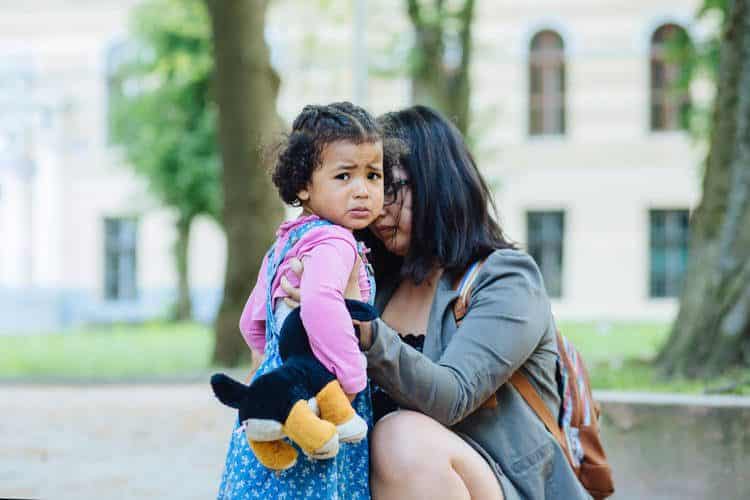Are Time-Outs Helpful or Harmful to Young Children?


Reflection can help to focus our attention on the importance, the beauty, and the fragility of relationships. By putting…
A number of recent articles in popular media that denounce the use of time-outs have sent many parents, understandably, into a tailspin. Critics believe that instead of helping children calm down, time-outs have the opposite effect—causing children to become even more distressed and “dysregulated,” or out of control. Further, children can become so overwhelmed by the disruption in their relationship with their parent during time-out (and by the shame they feel for being “bad”) that their emotional upset increases and their likelihood of learning from the experience decreases. But all of these negative outcomes assume that time-out is approached with anger, shaming, and harshness by the parent. When implemented this way—as punishment—time-out can no doubt be detrimental to the child.
Giving children (and parents!) space to calm themselves can be helpful, not harmful.
Rebecca Parlakian
Opponents of time-out often suggest “time-in,” which entails a parent physically comforting a child to calm him or her, no doubt a great strategy. But as anyone who has been the parent or caregiver of a young child knows, there are times when children are so out of control—throwing objects, kicking, hitting, biting—that they cannot accept comfort and in fact, the more the parent tries to soothe the child, the more out of control she gets. She’s on system overload. At these times, parents are also pushed to their emotional limit, their last nerve worked. When emotions (and cortisol levels in the brain) are sky-high, a break for both parent and child can be a healthier solution than an ongoing battle. Sure, in a perfect world, parents would be able to manage their reactions (indeed, the lion’s share of my work with parents is on helping them learn this very skill). But alas, parents are also human, and as hard as we may work on controlling our emotions, there are times when the only way that is going to happen is when we can take a break from the intensity of the moment.
In this situation, giving the child a break can actually be a positive parenting strategy. The critical factor is the way this break is implemented. When done calmly and lovingly, it can be an important opportunity to prevent further escalation, to provide both child and parent a chance to regain control, and to then come back together to solve the problem when both are calm. There are a range of ways to do this, including the ideas below that families in my practice have used with success.
Create a special, safe space.
In my household, we established the “cozy corner.” A family I work with created the “peace place.” I recommend parents talk with the child in advance about the purpose of this safe space—that it is where people in their family go when they are losing control and need a break. (I suggest parents also use it to take a break themselves, which can serve as some very powerful role modeling.) Parents include children in designing the space, giving them choices of acceptable items that can be included. One family put a small nylon teepee in their child’s room, which provided a sense of boundary and comfort. When a parent assesses that a break is needed, it is done calmly and lovingly. Even if you are holding your child out at arm’s length to avoid his kicks and swatting at you, as calmly as possible, take him to his break place and let him know that you can’t wait until he can calm himself so that you can play again. Separations aren’t inherently or automatically harmful to young children. When separations are framed and approached lovingly and supportively—not punitively—they can be caring, not callous.
Keep expectations for what the break will accomplish in check.
Children—especially those under 3 years old—do not yet have the ability to reflect on their own actions and behavior. This means that the goal of taking a break is not self-reflection (“Gee, I wonder why I let my emotions get the best of me—I really shouldn’t have thrown that train” is beyond most 2-year-olds), but to provide a quiet place where children can move from a state of high agitation and upset to a sense of calm. The break offers the space for both parent and child to regroup, and then come back together to talk about what the child could do the next time this situation arises. No learning takes place when children are in an agitated, emotionally flooded state.
In my household, we established the “cozy corner.” A family I work with created the “peace place.” I recommend parents talk with the child in advance about the purpose of this safe space—that it is where people in their family go when they are losing control and need a break.
Rebecca Parlakian
Choose a time limit best suited to your child.
One approach is to have the break end when the child is calm. Another option is to set a timer for—3 to 5 minutes—then go back to the child and check in. At this point, she may still be upset, but if she is no longer out of control and is willing to accept being comforted, you can help her move on. Remember, you’re not giving in to whatever caused the original upset—you’re just helping her learn to calm herself and to accept an alternative, for example, reading a book together instead of playing on the tablet that you had taken away, which caused the tantrum.
Ignore the behavior but not the child.
If a child is out of control but not harming herself or others, it can be very effective to just ignore the behavior. If a child is having a tantrum because you took away toys that he was throwing, acknowledge his anger (which is neither right nor wrong—it just is) and then move on. You might let him know you are going to make dinner and would love a helper when he is calm and ready. Or pick up one of his favorite books and start reading it aloud. This communicates that you are still a loving, present parent, ready and eager to engage, but that you’re not going to participate in or fuel his tantrum. (Check out this short video clip to learn about ways to help children manage their emotions.)
Using breaks mindfully, as a tool to help young children learn to cope with their strong emotions, is all about the way it’s done. Breakdowns are evidence that children are having a hard time coping with one of life’s inevitable frustrations or disappointments. They are not purposefully misbehaving, they are just reacting. Their intense emotions—and limited skills in self-regulation—sometimes cause them to lose control over their minds and bodies. A short break from interaction can help them cool down. In the context of a loving, strong parent-child relationship, giving children (and parents) this space to calm themselves can be helpful, not harmful.
Originally published by PBS Parents. Read the article here.
